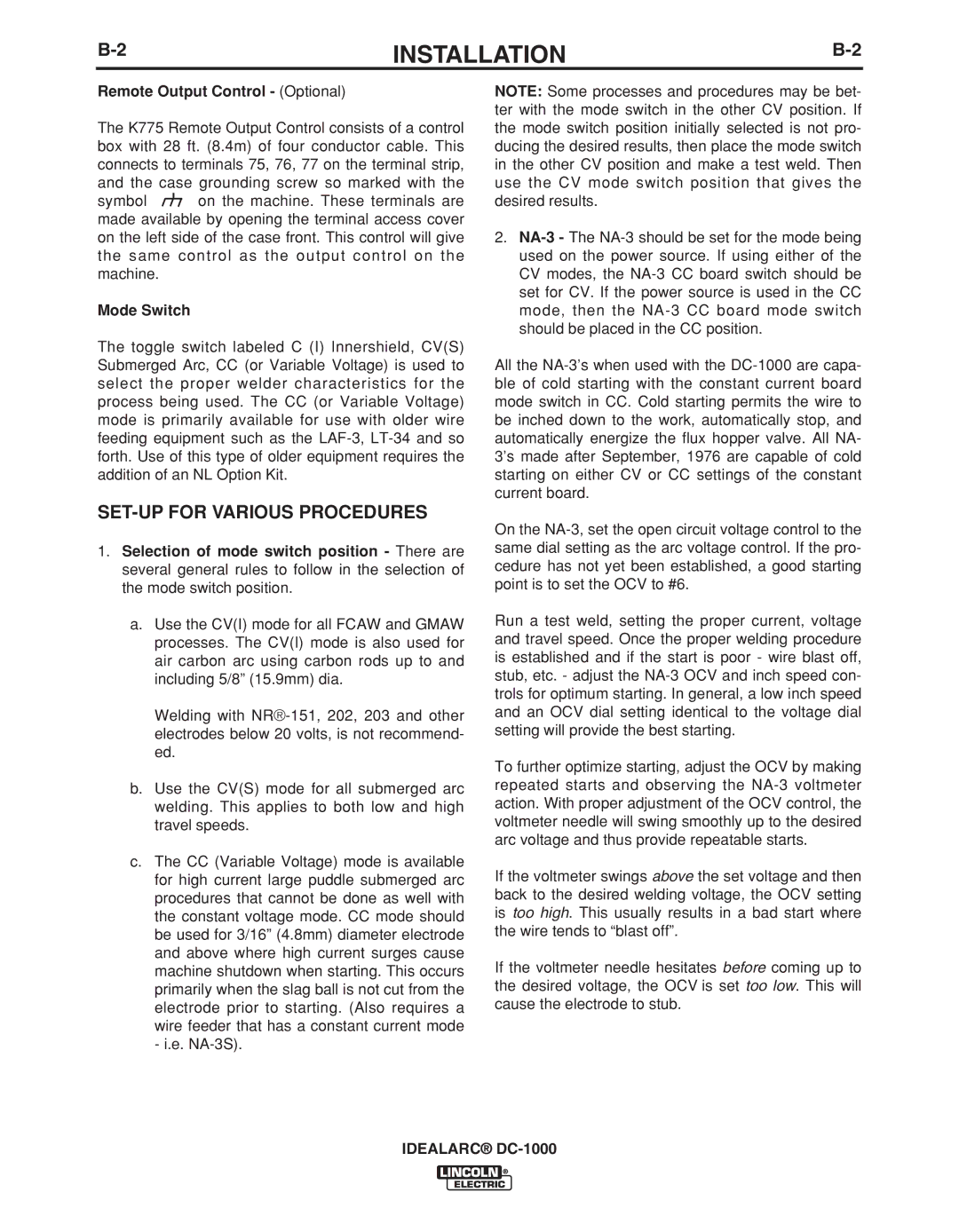IM420-D specifications
The Lincoln Electric IM420-D is a high-performance industrial welding machine that offers advanced features and technologies tailored for demanding welding environments. Designed for arc welding applications, the IM420-D is a versatile solution suitable for various welding processes, including MIG, TIG, and stick welding. This flexibility makes it an excellent choice for both professional welders and industries that require a reliable and efficient welding system.One of the standout features of the IM420-D is its impressive output range. With a maximum output of 420 amps, this machine can handle thick materials and deliver deep penetration, making it ideal for heavy-duty applications. The machine also provides consistent arc stability, ensuring high-quality welds with minimal spatter. This functionality is essential in maintaining productivity and reducing the need for post-weld cleanup.
The IM420-D incorporates advanced digital control technology that enhances user experience and precision. The intuitive interface allows operators to quickly adjust settings for voltage, wire feed speed, and other parameters, ensuring optimal performance for diverse welding tasks. Additionally, the machine is equipped with a memory function that saves preferred settings, enabling quick setup for repetitive jobs.
Another notable characteristic of the IM420-D is its robust construction. Built to withstand the rigors of a manufacturing environment, the machine features a durable casing designed to protect key components from dust, moisture, and impact. This reliability results in fewer maintenance issues and extended service life, contributing to lower operational costs over time.
The IM420-D also includes a range of safety features that prioritize operator protection. Overheat protection, voltage fluctuation safeguards, and high-quality electrical insulation ensure a safe working environment, minimizing the risk of accidents during operation.
In conclusion, the Lincoln Electric IM420-D is an exceptional welding machine that combines high output, advanced digital technology, and robust design. With its user-friendly controls and safety features, it meets the needs of professional welders and industries seeking efficiency and quality in their welding operations. Whether for manufacturing, construction, or repair work, the IM420-D stands out as a top-tier choice in the welding equipment market.
